
Bijapur
Sun 19th Feb 2023. I was up and about early and off to the bus station. I’ve often found in the remoter parts of India, bus timetables are a fickle thing. The guidebook may say one thing, people at the bus station say another and then the actual buses confound them both. Today I was told there was a bus to Bijapur at 9.30 but someone else said it was better to get the bus to Gulbarga and change there. As the Gulbarga bus arrived at 8.30 I hopped on. Better to be moving I thought.
The journey was fairly dull. The road was dry and dusty and the landscape very flat. Scrubby fields spread for miles around and I could see that they grew cotton here as I also noticed great bales of the stuff from time to time, by the side of the road and on carts. I changed bus at Gulbarga as planned but the landscape remained the same. Got into Bijapur about 4ish, the driver even dropped me right outside my hotel – the Karnataka Government Tourist hotel – Hotel Mayura Adilshahi. My guidebook hadn’t mentioned it surprisingly but it was pretty good and cheap (Rs1680, about €18). The room was small but clean and it faced an internal garden area which was very pleasant. I was also just in time for a late lunch at the attached restaurant and a shower.
The following morning I was up bright and early again. Even before the restaurant was open for breakfast. However the guy there said he could rustle something up for me. It turned out to be upmaa, not a good choice. I can pretty much eat anything but this was disgusting – oily semolina with chillis. I managed to get some fruit outside to take the taste away.
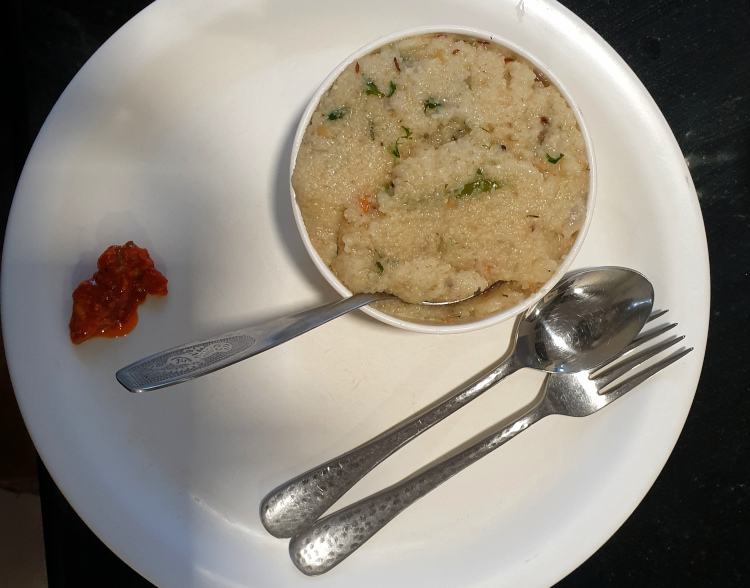
I was off to the Ibrahim Rauza memorial. Billed as the southern Taj Mahal, it is indeed one of the most impressive monuments in the Deccan. Originally built for his wife, the sultan, Ibrahim Adil Shah II actually died while they were building it so he is inside too. Facing his tomb is a ceremonial mosque.
I had already worked out some sort of routine in that I would get up early to avoid the heat, visit the monuments, then have a siesta during the hottest part of the day (it wasn’t that uncomfortable – about 35 degrees and very low humidity) and then out again in the late afternoon. These were also the best parts of the day for photography. As it happened it also meant that especially in the mornings I nearly always had the monuments to myself. There were no foreigners at all and the few Indian tourists seemed to arrive in the late morning. Anyway, it meant I had the Ibrahim Rauza completely to myself.
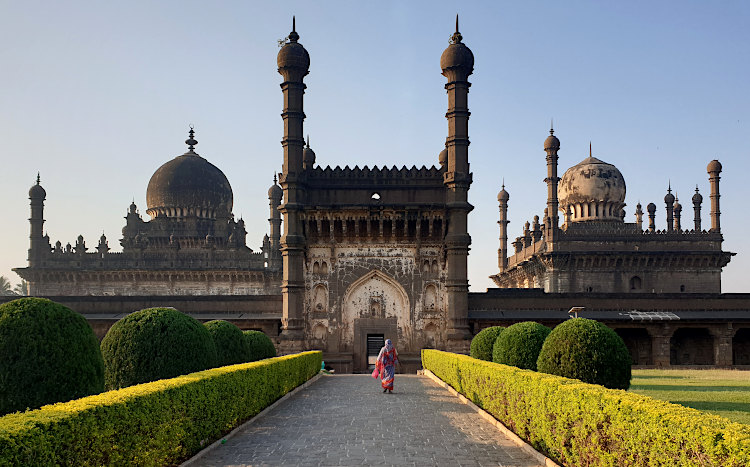
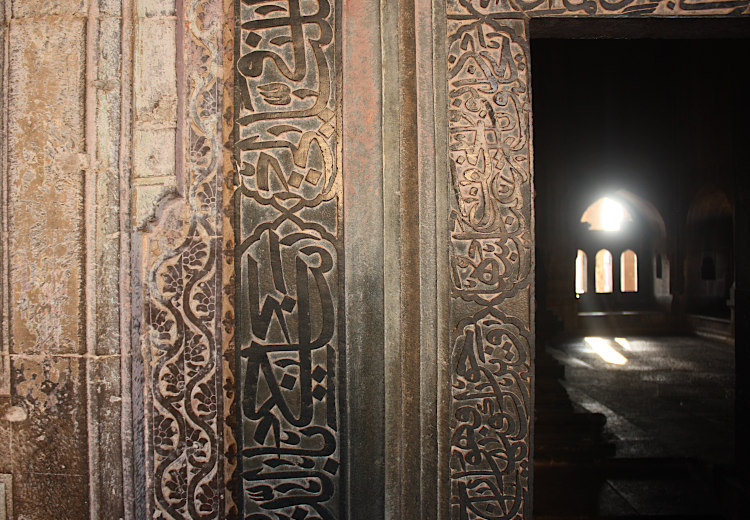
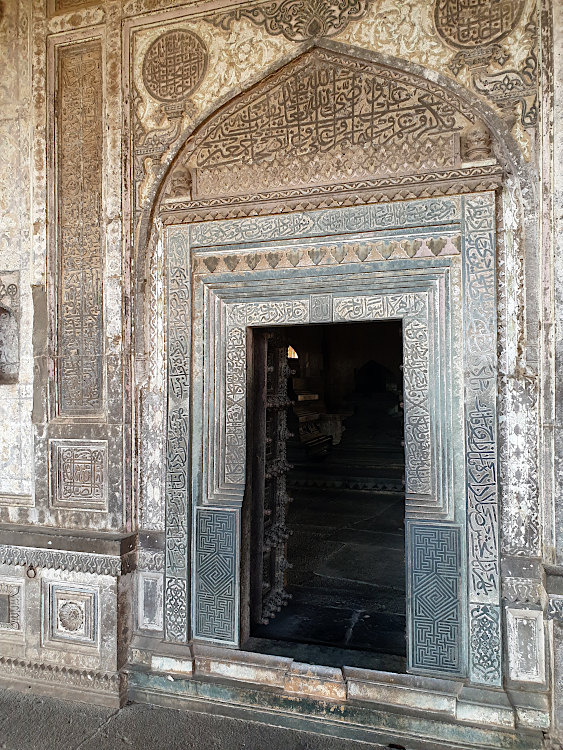
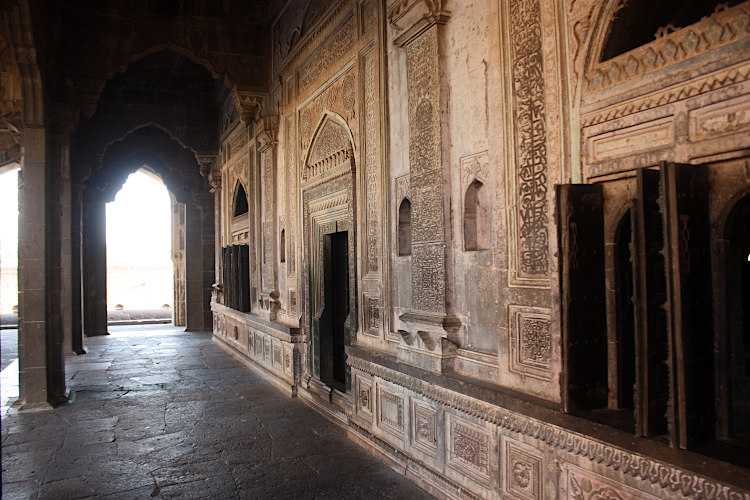
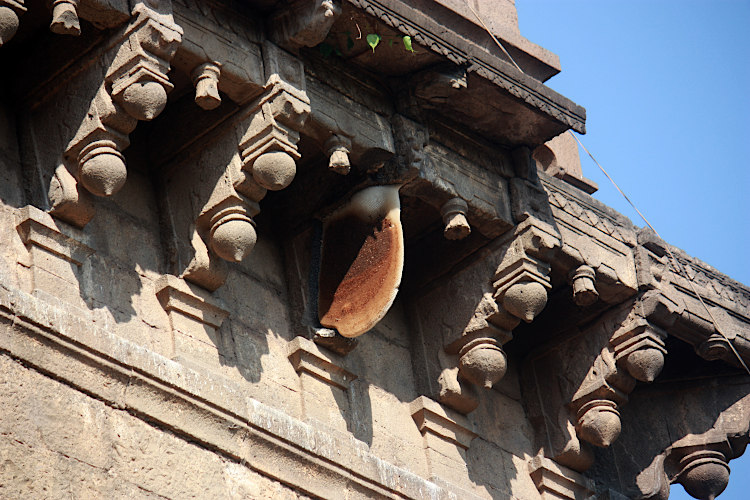
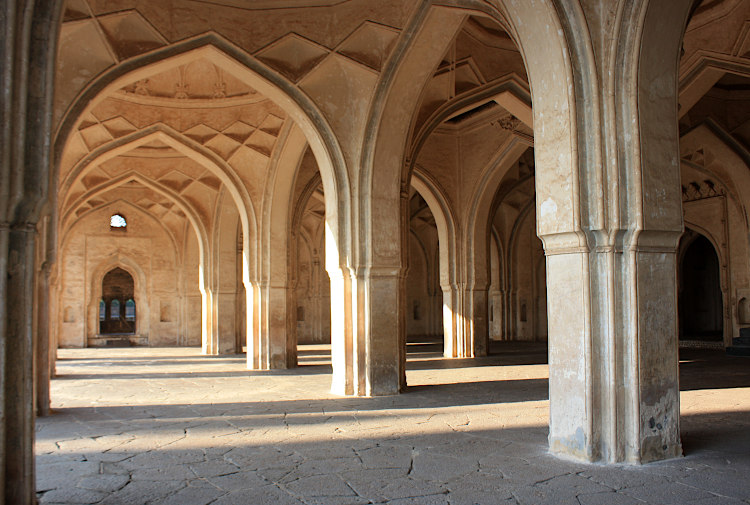
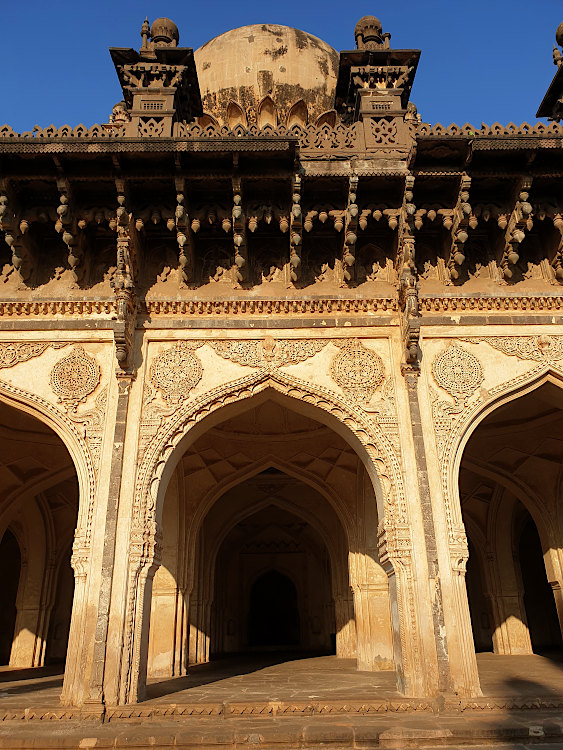
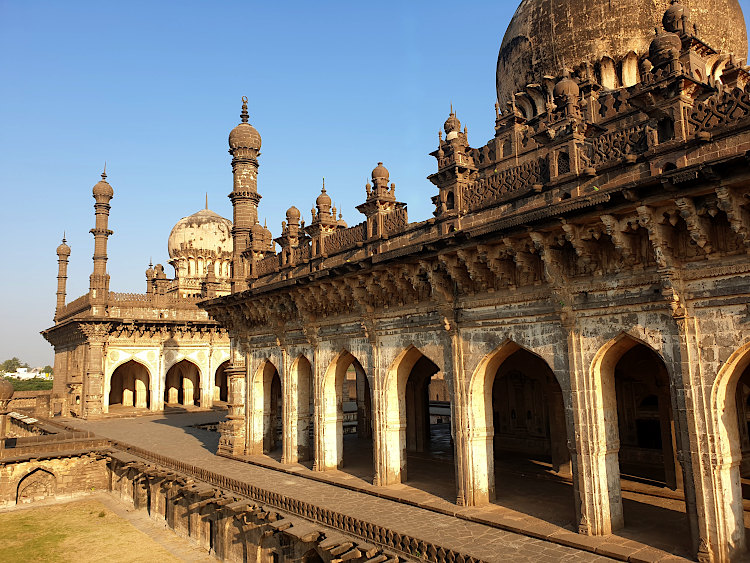
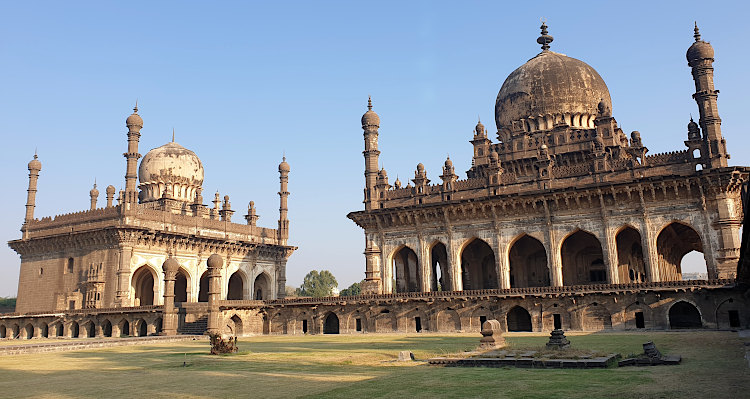
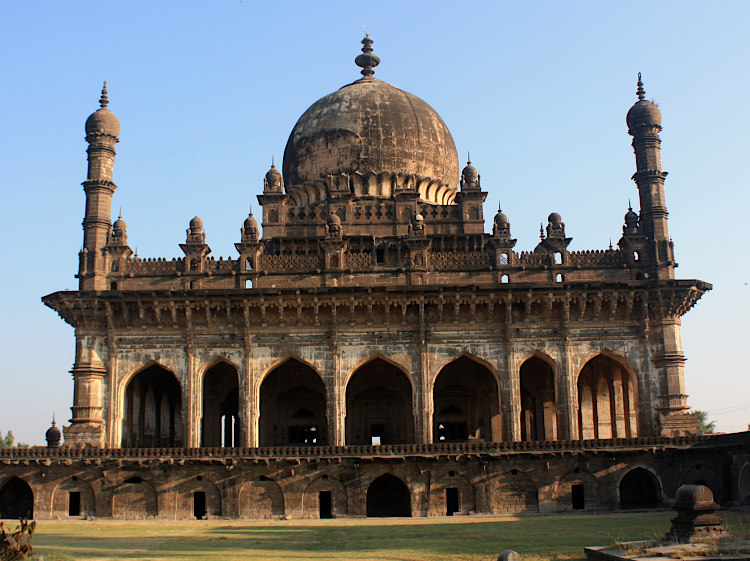
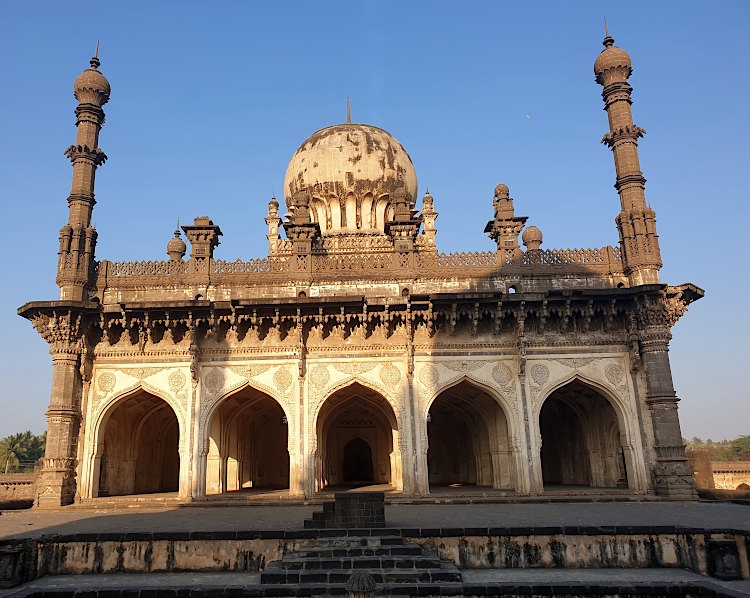
From here I walked slowly back to the citadel, the old city. On the way I noticed two impressive tombs where there was quite a long queue of men waiting for food parcels. It turns out the octagonal one was the tomb of a vizier to one of the shahs – Khawas Khan and the square one to his religious advisor Abdul Razzaq Qadiri. They are now known as the Jod Gumbaz and are popular “dargahs” which is a shrine of a holy man where people often pray. At these ones women are not allowed in to the interiors so there were a number praying outside.
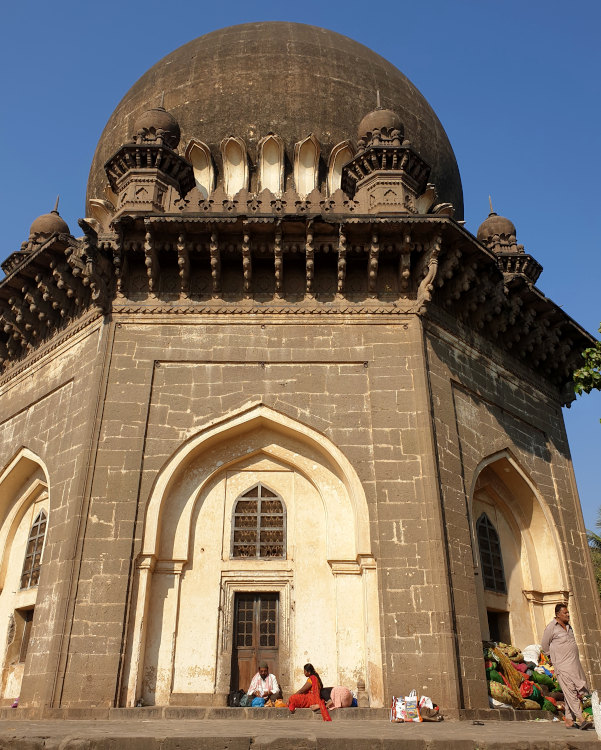
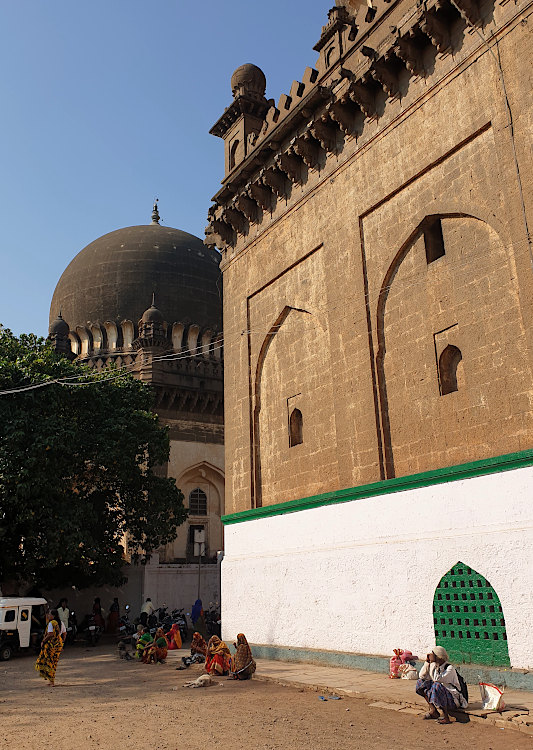
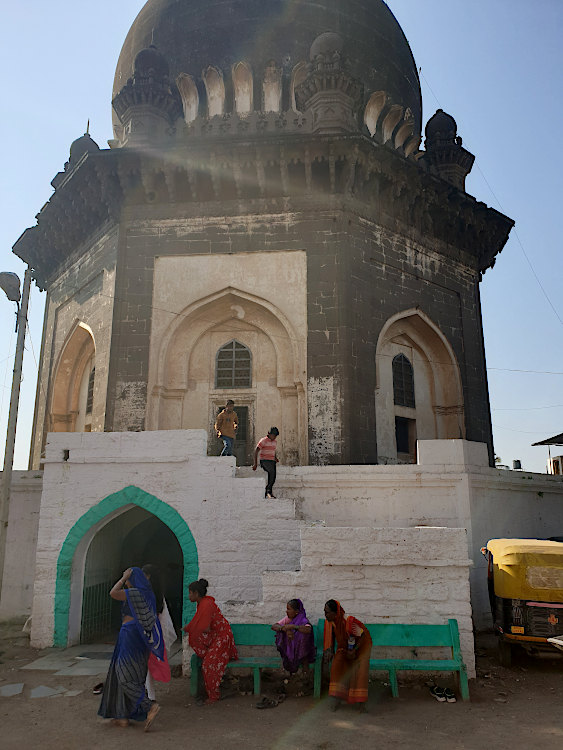
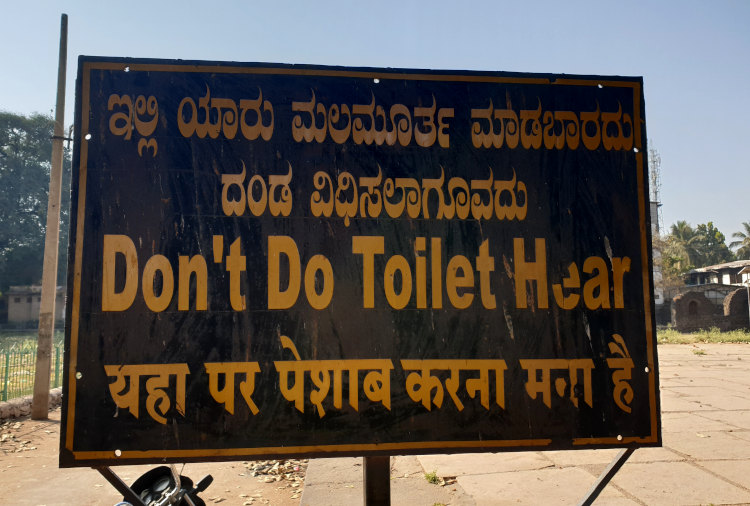
Most of the gates to the old citadel have been destroyed but you can still see the remains of the walls, still very impressive. Indeed, inside there seem to be a number of very old structures and ruins lying about untouched by archaelogists. I was heading for the Asar Mahal, built in 1646 as a hall of justice. It is also forbidden for women to enter. In this case I believe because it was said to contain two hairs from the prophet Mohamed. The caretaker was keen to welcome me inside, not to see Mohamed’s hairs but a rather incongruous Hindu shrine which had been built in the corner of the building. He also wouldn’t show me the upper storey which supposedly contained very beautiful frescoes. Perhaps he wasn’t the caretaker at all.
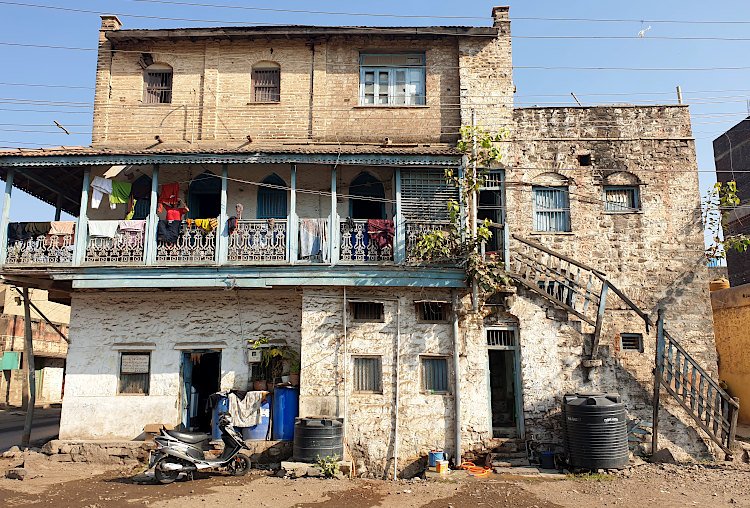
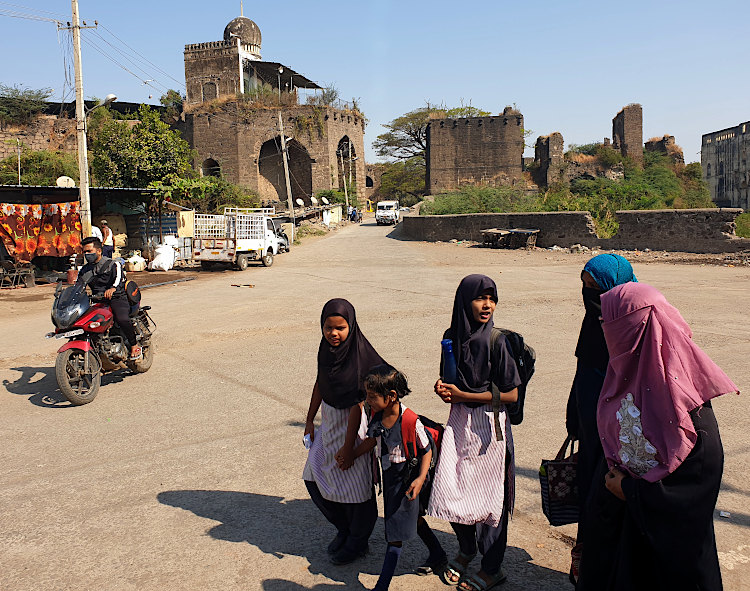
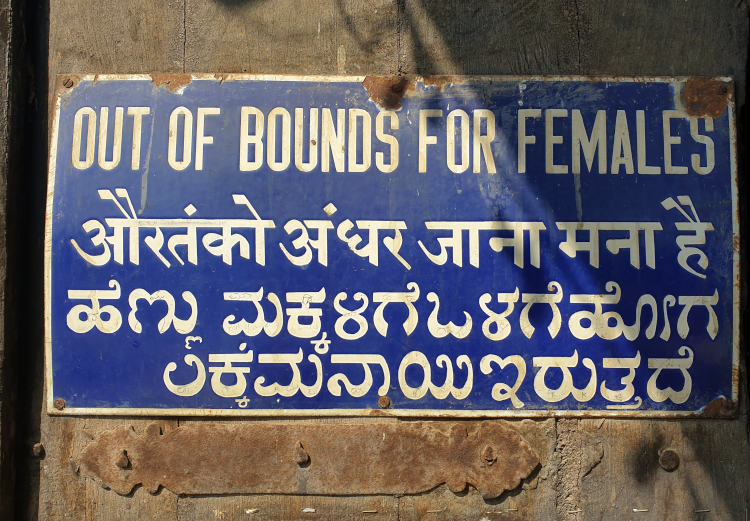
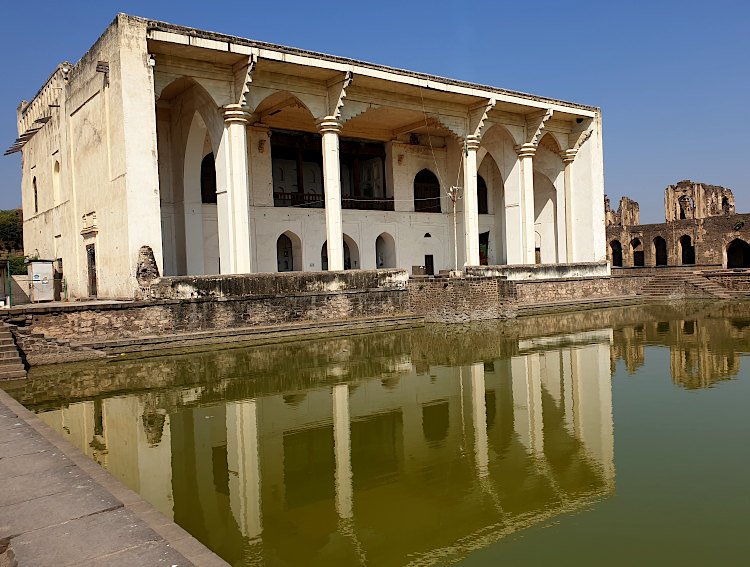
On the way back to the hotel, I had some sugar cane juice which was coming into season and I also had some fried rice and chicken, the only non veg meal (bar fish) I had on the trip. It seemed that chinese food, or Chainese food as it was often seen, was quite popular in these parts.
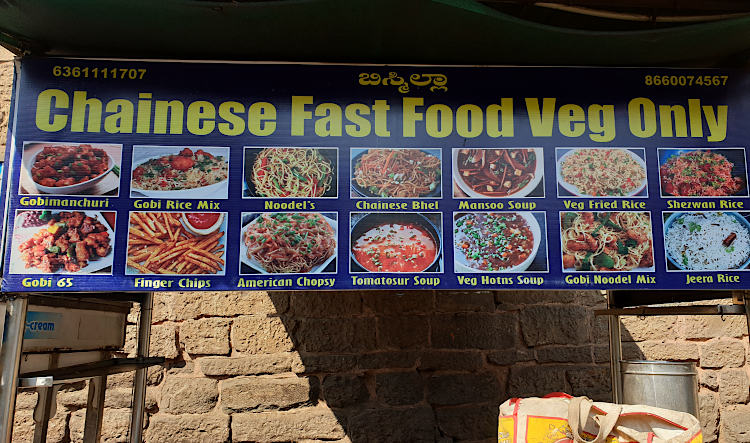

In the afternoon after my siesta I saw one more monument, the Bara Kaman, famous as the unfinished mausoleum of Ali II. They had built the foundation arches but nothing on top.
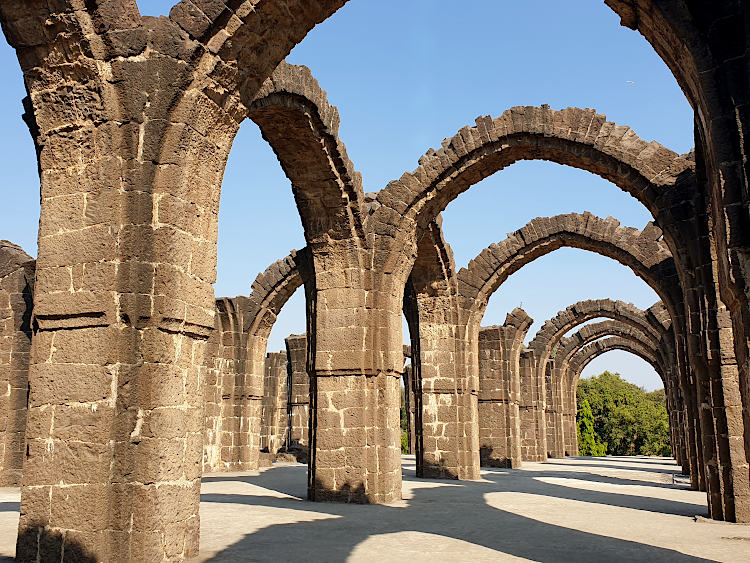
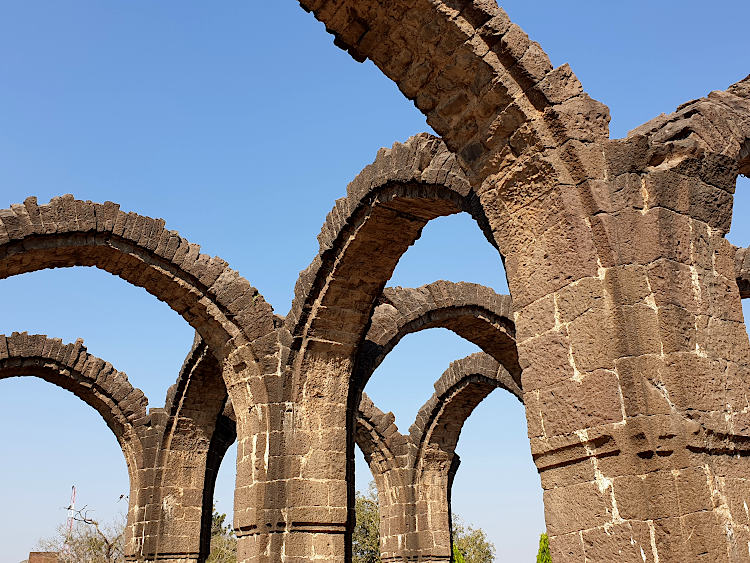
I also had a wander around the market to take some photos of the locals
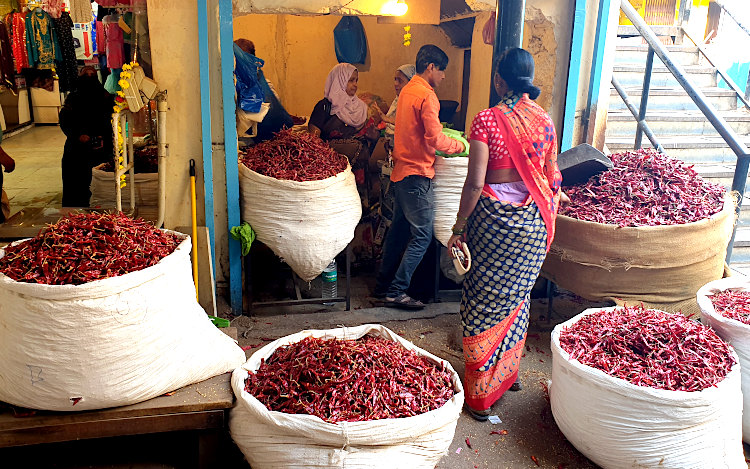
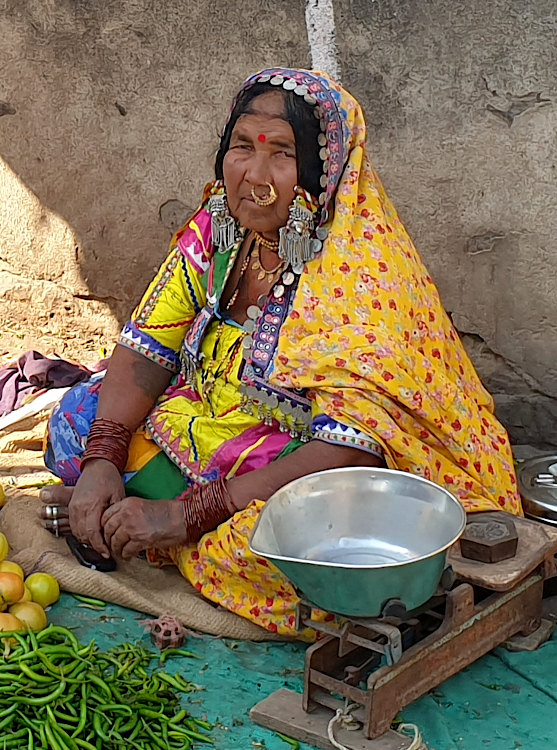
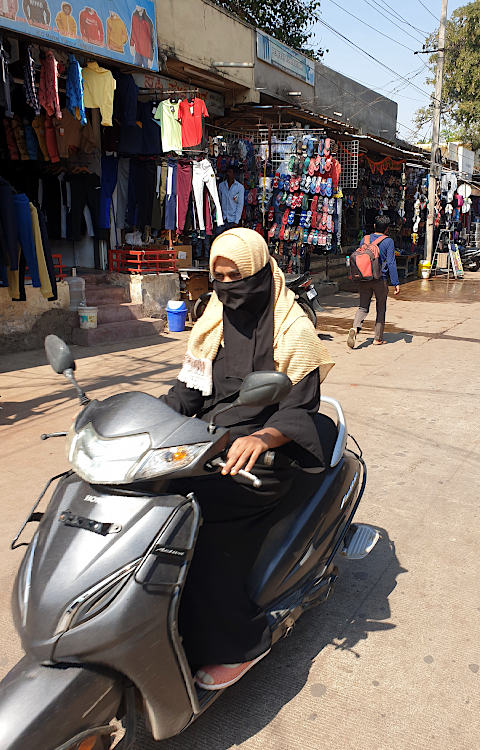
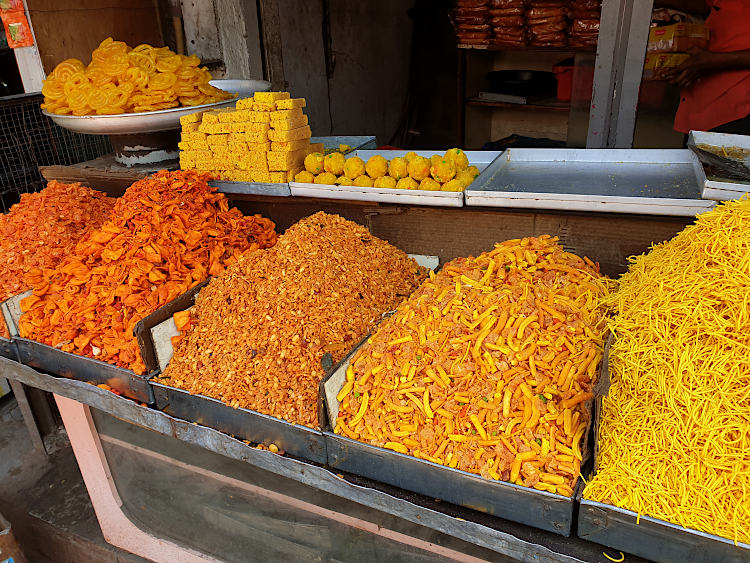
Obviously with its Muslim history and quite large Muslim population in relatively nearby Hyderabad, I was not surprised to see many Muslims in town. However, there seemed to be more than the official census figures of 2011 which stated that 82% of the population were Hindu, and 17% Muslim. As it happened, 0.11% were Christian – about 2,000 people for the congregation of the all Saints church (see below).

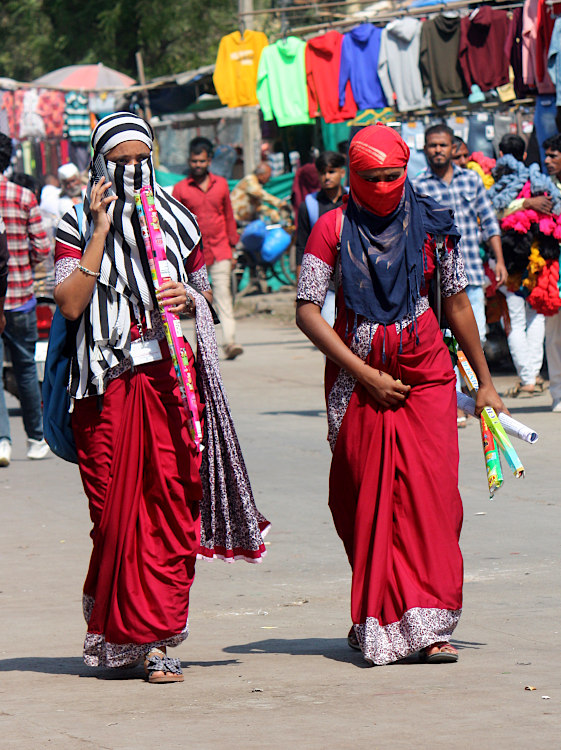
Below is a photo of all Saints church. It’s next to the Gagan Mahal, another large building in the citadel. I haven’t been able to find out any information about it but I can’t help thinking it’s an Islamic building from the Adil Shah period and has been reused.

Also nearby is the so called Seven Stories Palace, the Sat Manzil, although only three remain and you can’t get in as it is used as Government offices. Just outside are many men with typewriters. I’ve seen these before, usually outside Government offices or law courts as they help people complete written documents or forms.
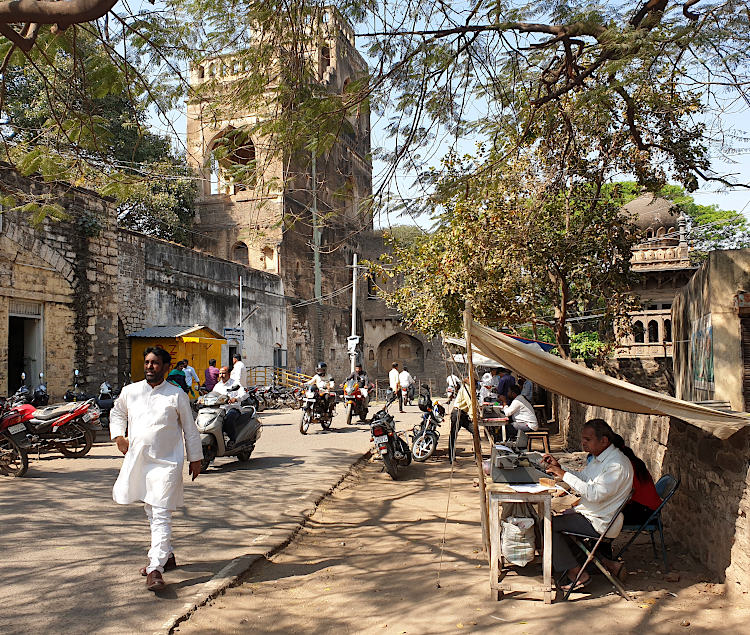
Opposite the Sat Manzil is the Jal Mandir, a water pavilion. a very elegant structure sat in a very small, empty pond but I could find no information on its use.
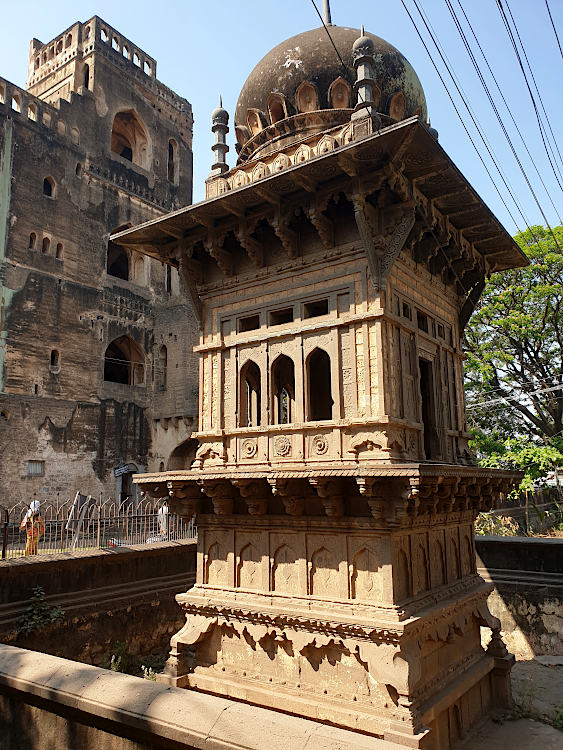
I was also a little surprised at the popularity of Paan, given the number of shops about, but I was pleased that the streets were not streaked in the red dye that you often see in paan popular areas.

Tuesday 21st February 2023
Once again I was up and out very early. This time to the Gol Gumbaz, probably the most iconic Islamic building in South India. Built in 1659, it is the tomb of Mohamed Adil Shah, the greatest of the Adil Shahs. It is truly huge, the dome twice the size of the Taj Mahal. This time I was rather surprised to find quite a few people about. However, they were not tourists but locals out for an early morning exercise in the extensive gardens. Once inside the cavernous building it was eerily quiet.



Once inside the mausoleum a door opens at the base of one of the minarets and I ascended the building. Quite some climb it must be said. You can walk around the outside and the inside of the base of the dome with great views inside and out.




On the inside of the dome is the so-called whispering gallery. When I first got there I could hear a couple of people quietly chatting on the other side of the dome about 50 metres away. Then a family arrived and they, in typical Indian fashion, loved the cacophony they created. Thank goodness I didn’t visit in the afternoon when the schoolkids would no doubt arrive.
Below. unused mosque next door to Gol Gumbaz.

Once back down to earth I had a wander around the gardens and spotted some peacocks in addition to these spotted owlets.

For this trip I had joined the modern world and used google maps on my phone. I have to say it was an absolute boon – no more getting completely lost in some strange town and on this trip alone it got me out of some sticky situations. But I also had a map from the 1920s (below) which was really quite useful as all the important monuments are marked and the roads haven’t changed. The hotel isn’t marked but it was in an excellent location at the north of the citadel (no. 16) and in fact could have replaced “The old mosque”. It’s not clear on the photo but follow the link for a better view.
The Gol Gumbaz is in the East and from here I walked due south to Jamiya Masjid road which, not unsurprisingly went past the mosque of the same name built in 1576 by Ali Adil Shah. From here due west back to the citadel.

The Jami Masjid is quite simply designed as many mosques are, but unusually it has no minarets as the building was unfinished.
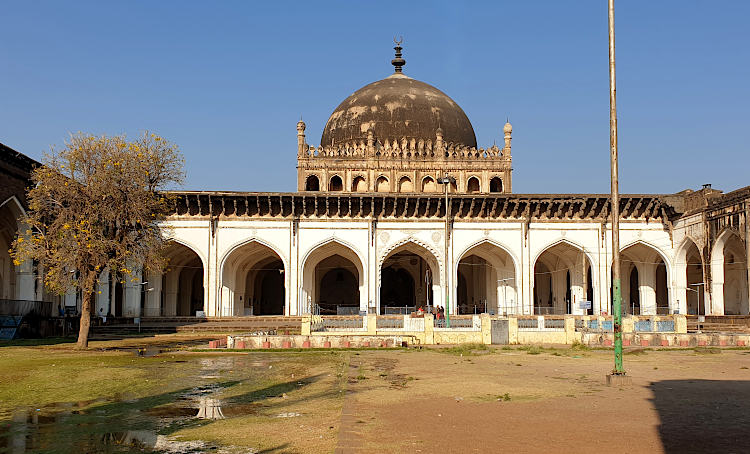
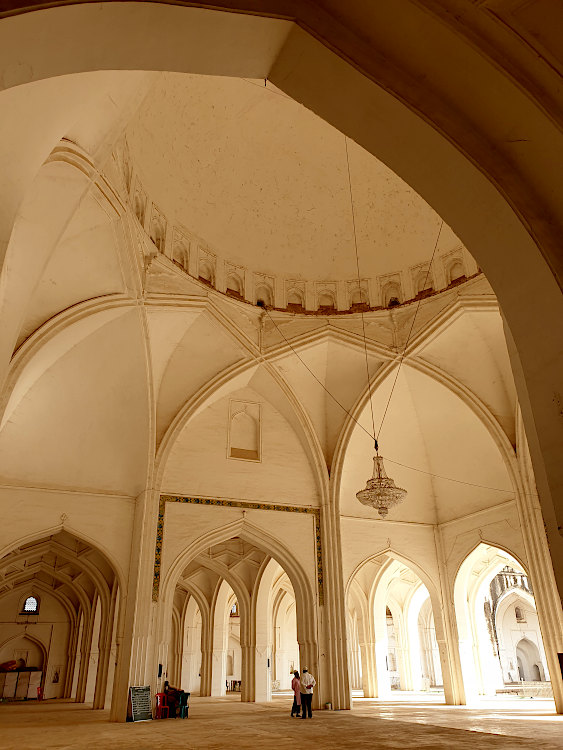
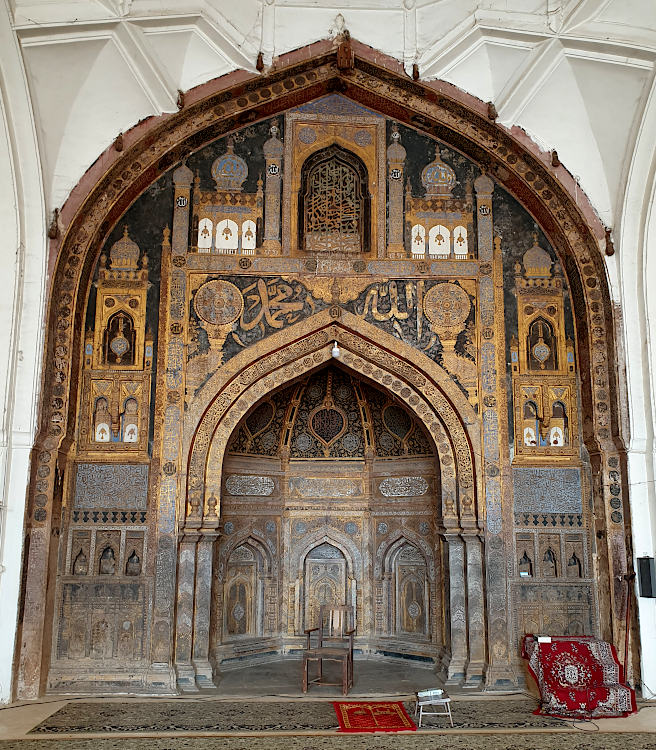
Further on from the Jama Masjid, it took some searching but I found the tiny Yusuf’s Jama Masjid. Although not well know this is one of the earliest buildings from the Adil Shah period built in 1513 and has a unique barrel ceiling. Like many mosques still in use, they keep whitewashing the walls and so the detailed carvings are often lost. It is good to see such an ancient building still in use however. I couldn’t take any photos from outside as it is now hemmed in by modern buildings.
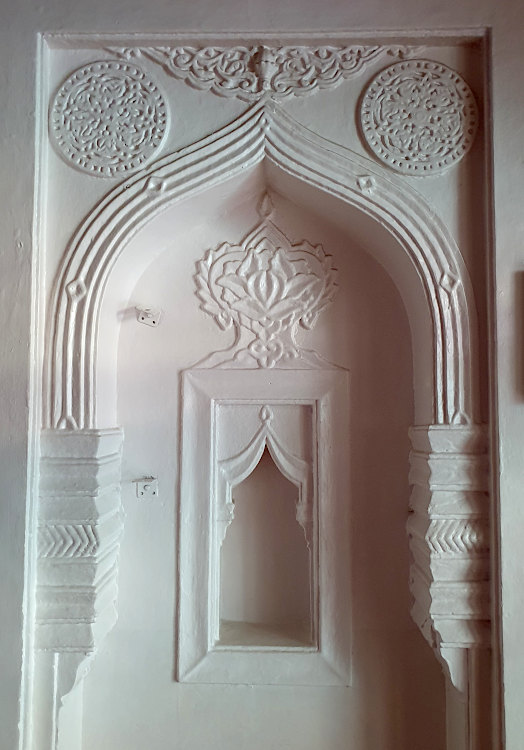
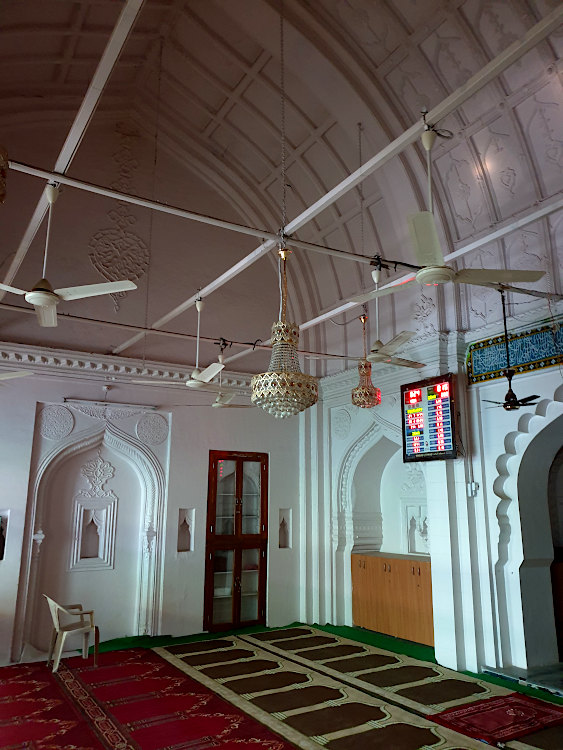
Further on down the road I came upon another remarkable building, the Mehtar Mahal (c1620). Although Mahal means palace it is simply the entrance gatehouse to an unremarkable mosque.
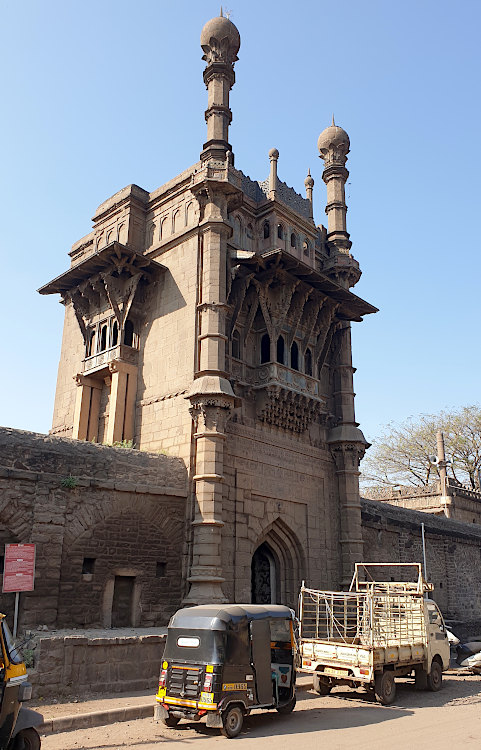
I was soon back at the walls to the citadel. Obviously they had been left to crumble. Amongst the rubble I found what appeared to be another Islamic building but with Hindu columns from a previous building. This could also be seen in a building across the road, currently being restored, the Kareemuddin mosque. This was built by the Khaljis way back in 1310 – during the first invasion of Muslims from the north. It was also interesting to note that presumably the old mihrab of the mosque had been converted to a Hindu shrine. So an ancient Hindu temple had been destroyed and the columns used to build a mosque and then a new Hindu shrine put in the old mosque!
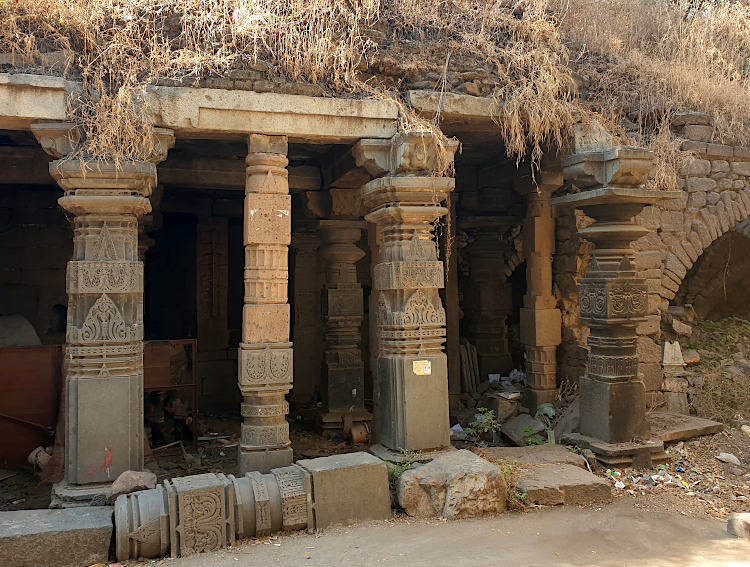

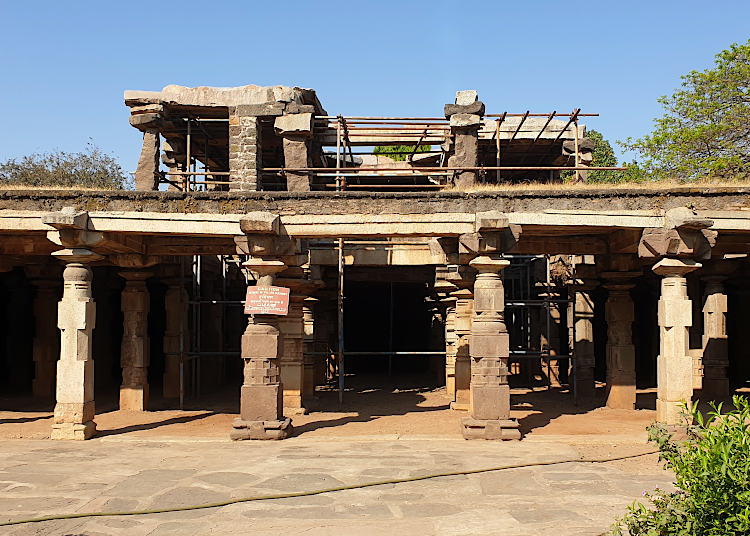
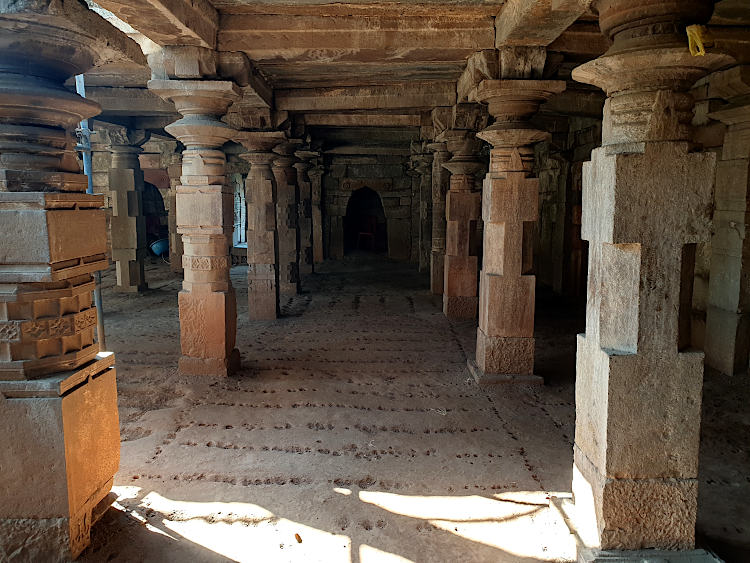
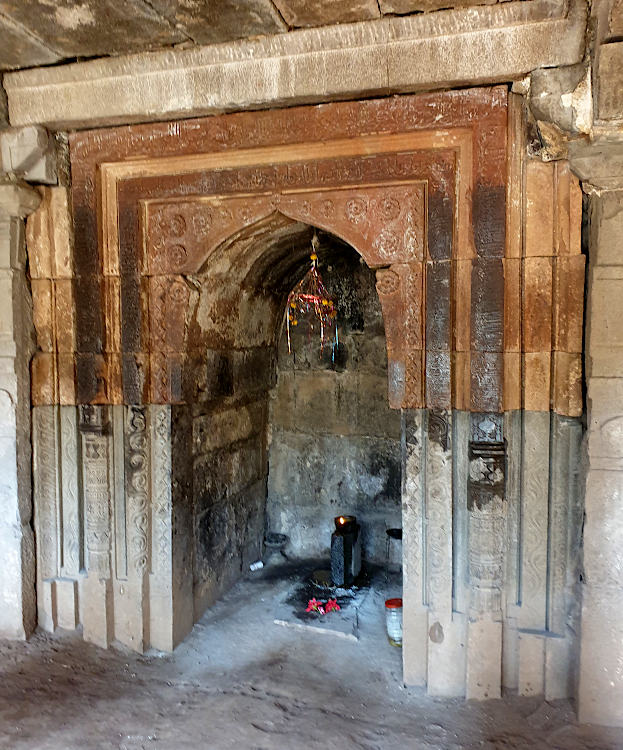
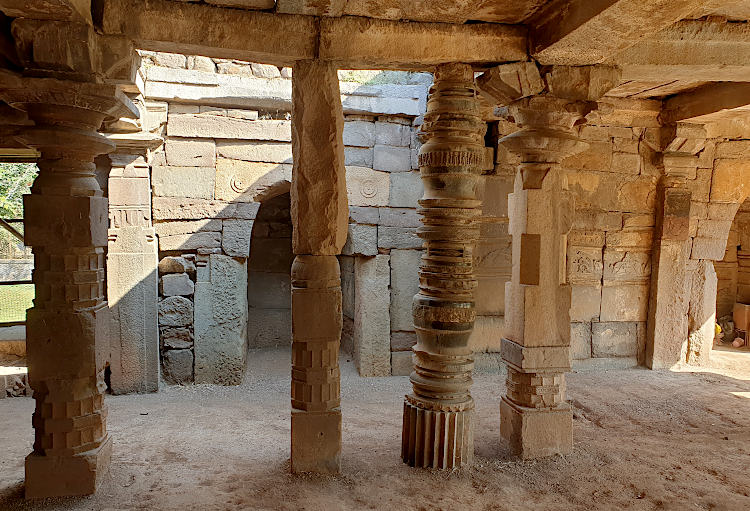
Although I had already seen a lot and done way over 10,000 steps it was still only ten o’clock! Time for some food and to put my feet up. After a quick siesta I was out again later in the afternoon taking more photos, some are below but they can all be seen on my shared google photos album here

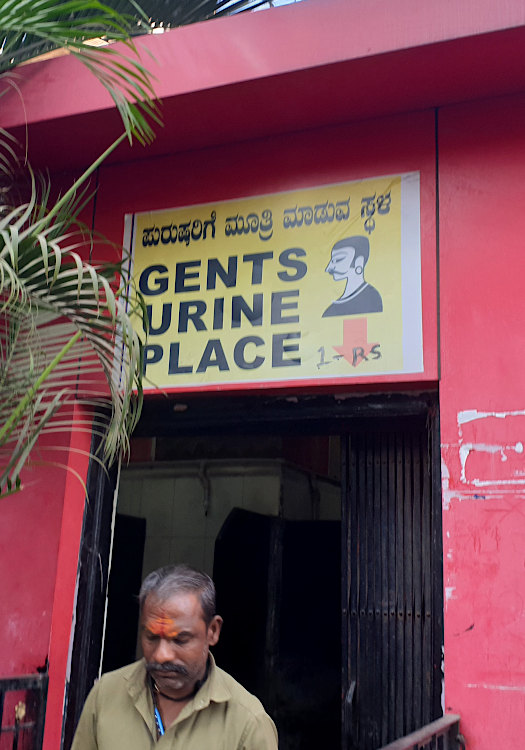
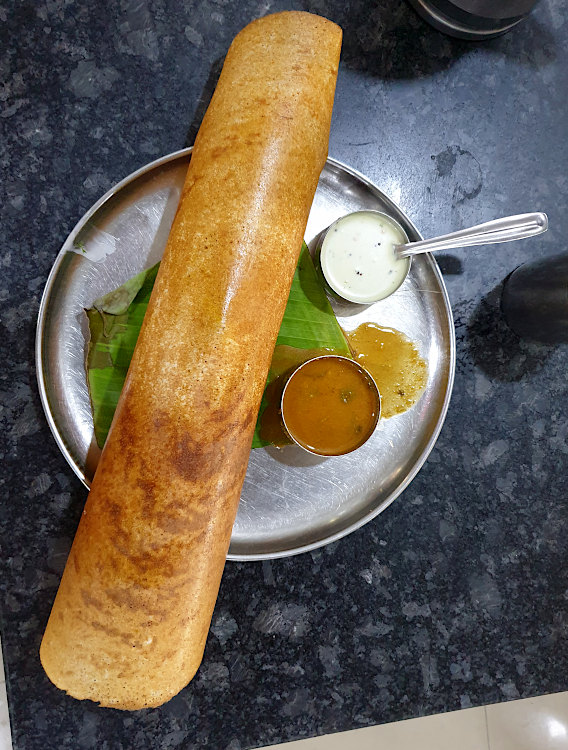
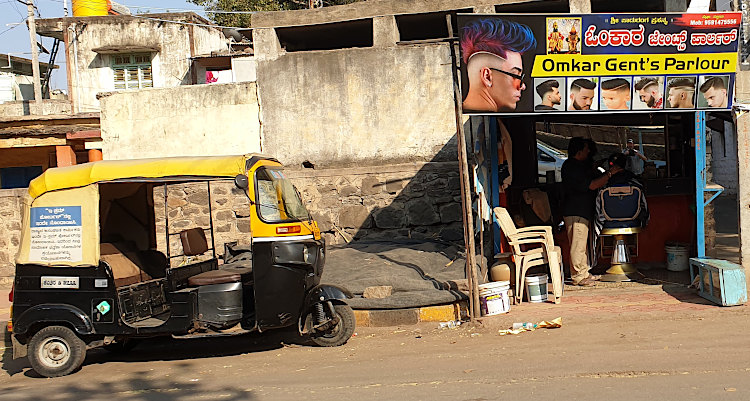

Map of the journey
More photos here